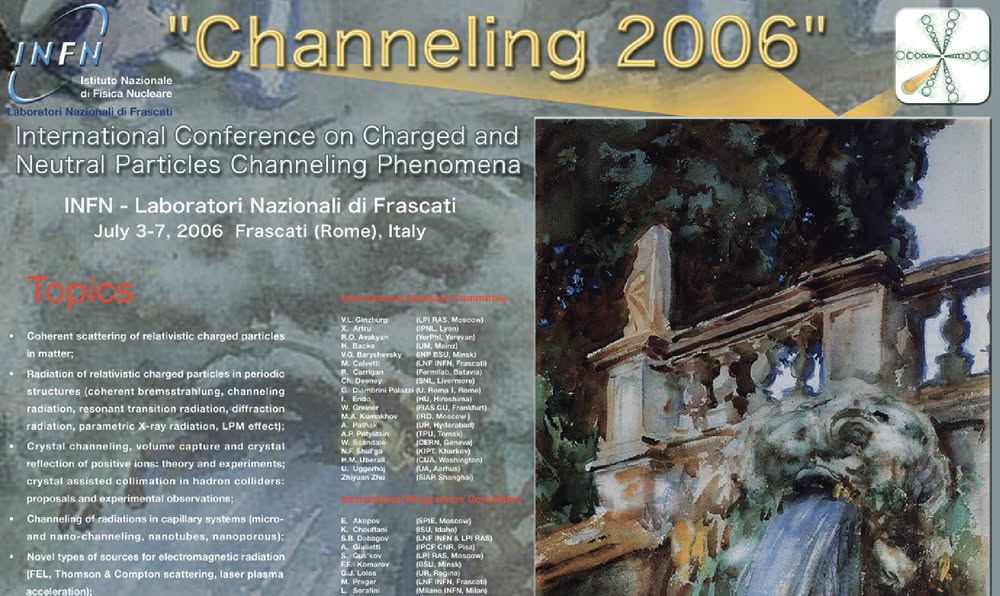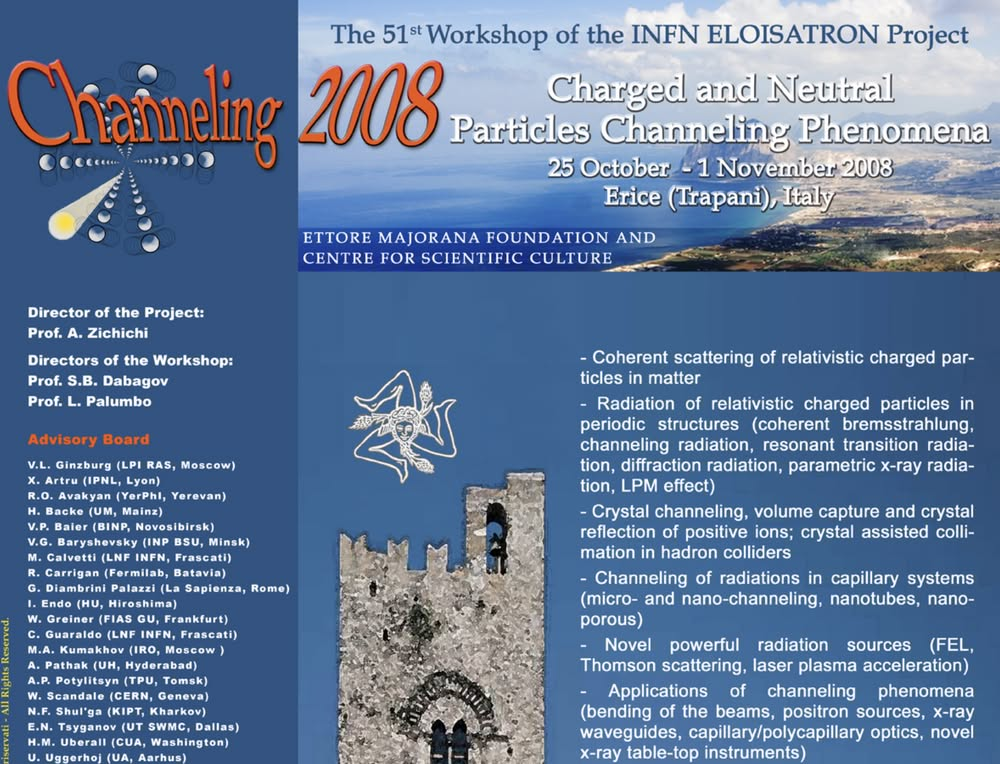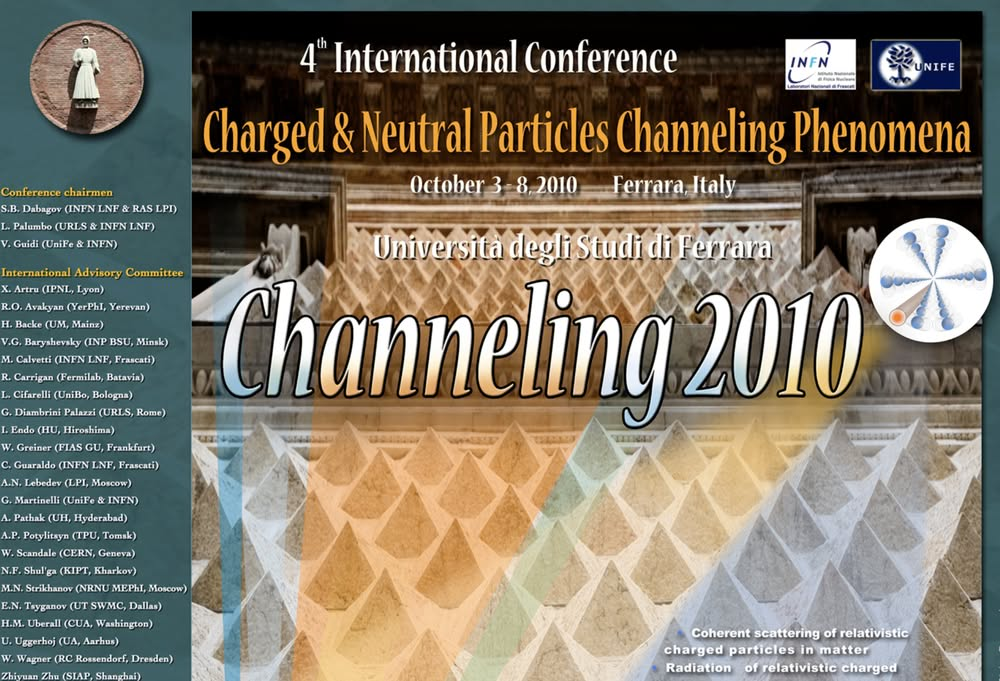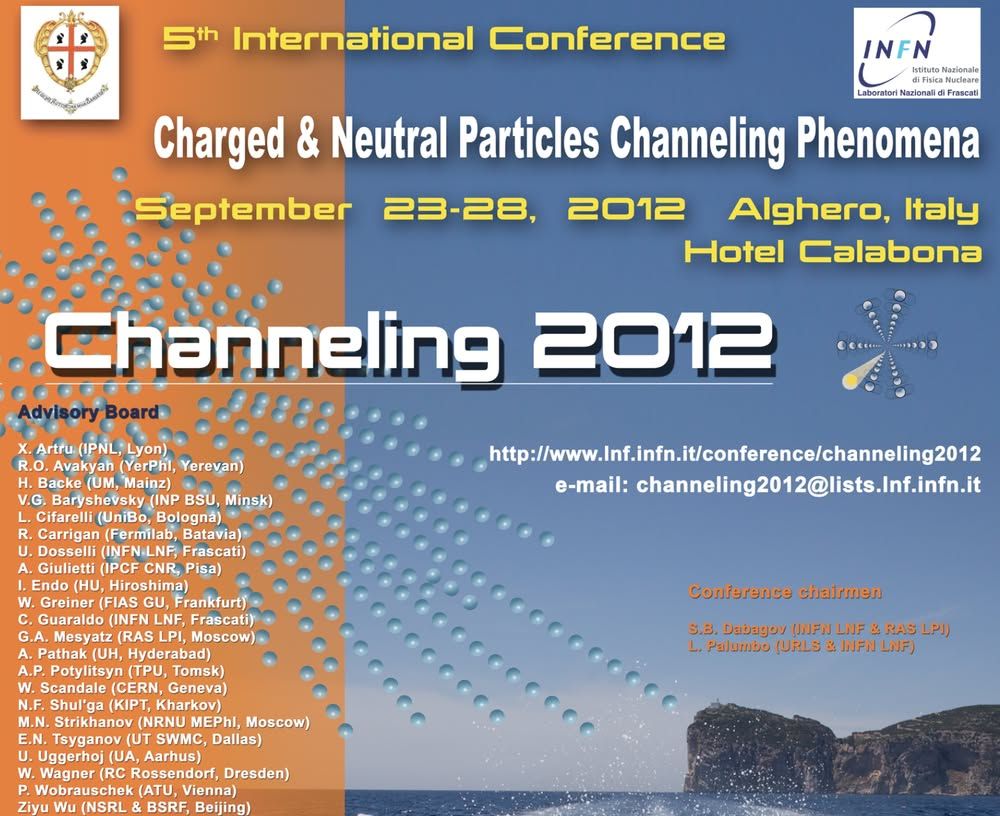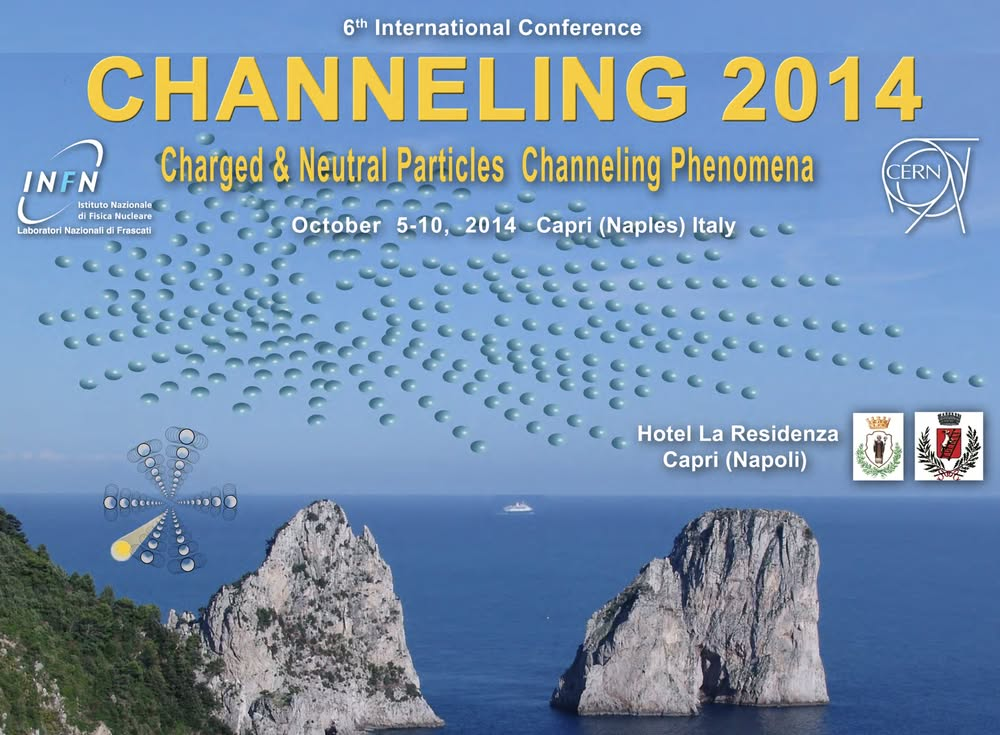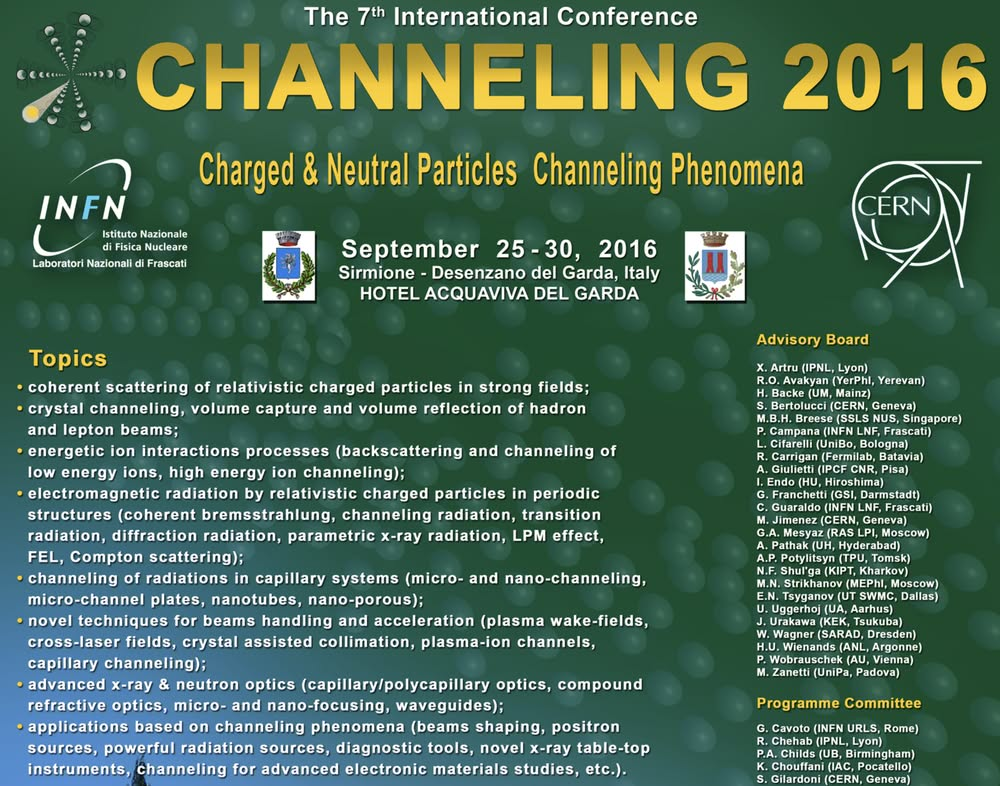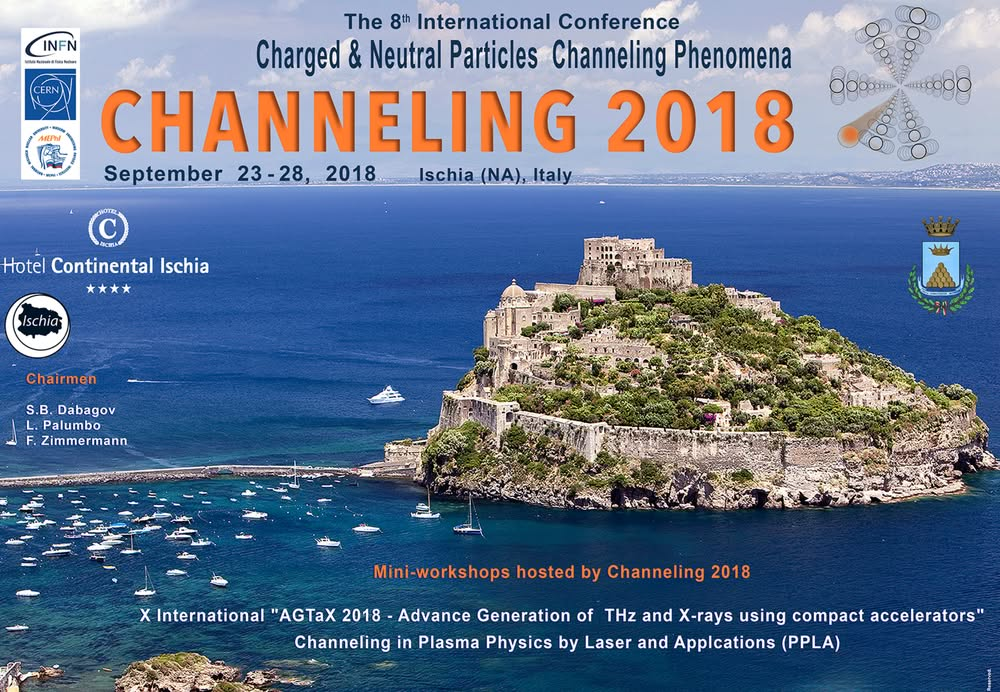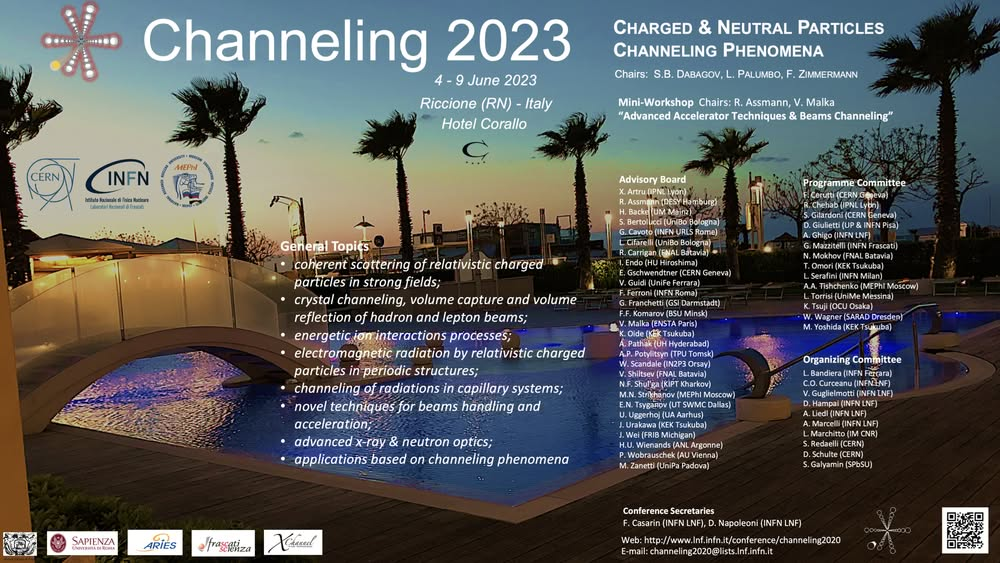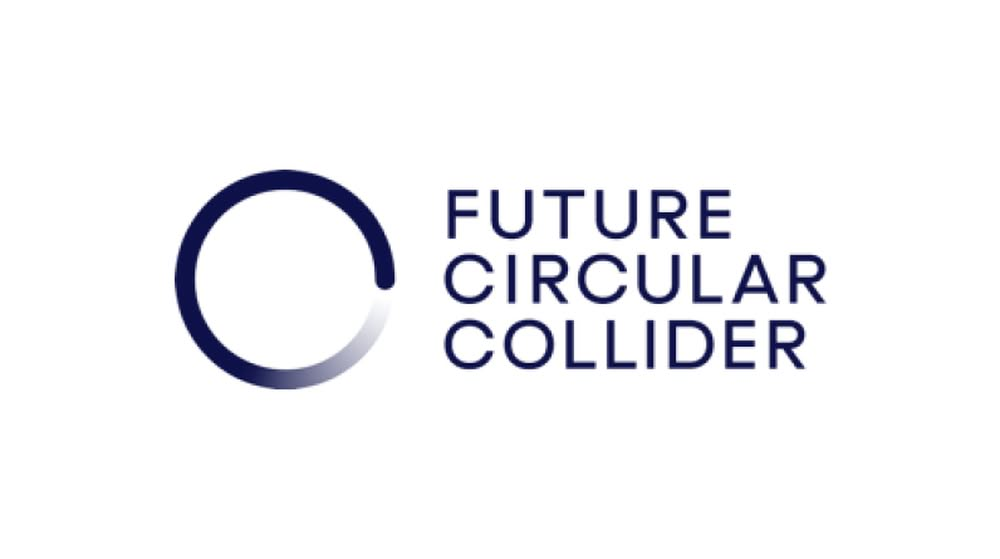The 10th International Conference
Charged & Neutral Particles Channeling Phenomena
8-13 September 2024
Riccione (Rimini), Italy

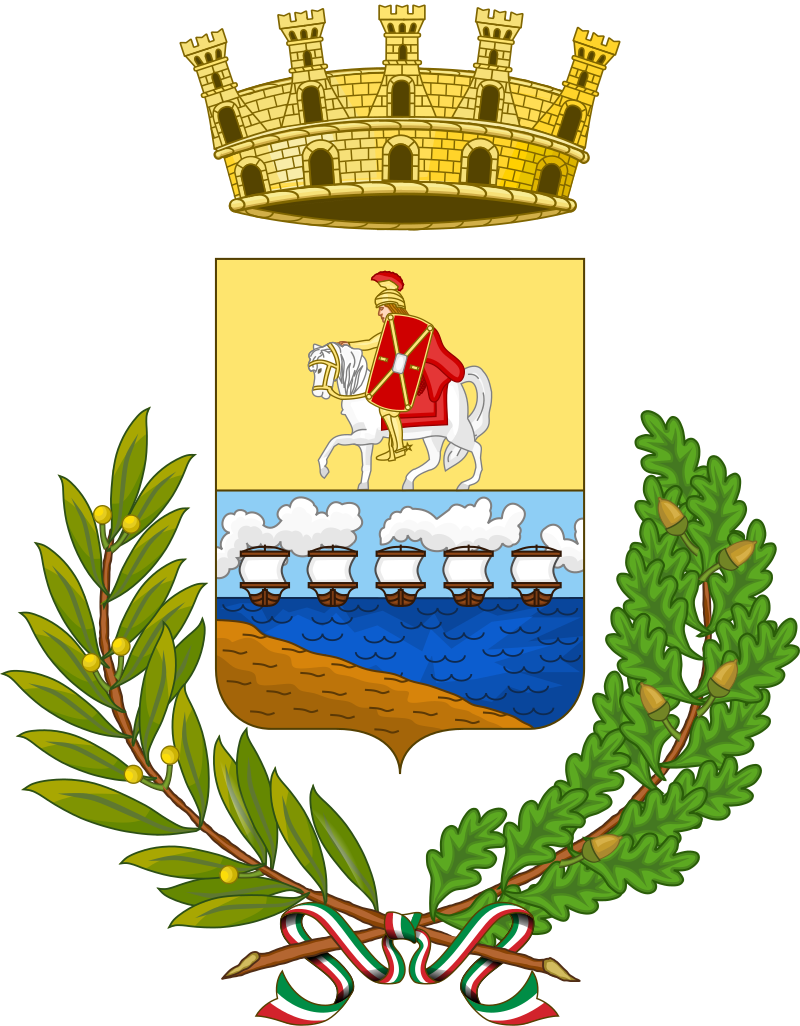
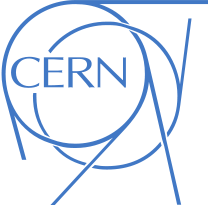
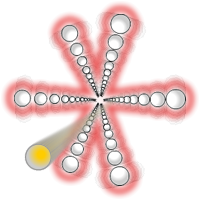 CHANNELING 2024
CHANNELING 2024The 10th International Conference
Charged & Neutral Particles Channeling Phenomena
8-13 September 2024
Riccione (Rimini), Italy



A Riccione, andavo in villeggiatura quand'ero ginnasiale... Allora, quando, con intima gioia, il gelato lo prendevo tutti i giorni, tutto era piu' assoluto e piu' eterno. Le giornate erano lunghissime, delle entita' dorate di vero valore e di vera durata: il periodo delle vacanze era un periodo della vita... A Riccione ho avuto la mia prima avventuretta... lei era un'allieva ballerina...
Pier Paolo Pasolini
Channeling 2024 will take place in Riccione, a
famous Italian seaside resort in the Province of Rimini, Emilia Romagna. The
city stretches along the shoreline and has a busy harbor.
Since the 1930s Riccione has been a main
destination of summer tourism on the Adriatic Riviera and one of the best known
seaside resorts in Northern Italy. After World War II, it was frequented by famous people,
such as Pele', Mina, Ugo Tognazzi, Vittorio
De Sica, and many others.
Every two years, a festival called the Festival
Del Sol takes place.
The main streets of Riccione, viale Dante and viale Ceccarini have numerous night spots, bars, and hotels and
they are the best place for shopping and eating during the day. The seafront is
a long boulevard, shaped by a road and a bicycle lane, that reaches up to the
town's end going along the sea.
The meeting venue for the period of
September 8-13, the Hotel Corallo is
placed in Viale Gramsci 113 - 47838 Riccione, Italia,
phone: +39 0541 600807 - info@corallohotel.com -. The conference hall, where all week working
sessions will be held, is placed at the hotel.
By car: Riccione is on the Adriatic
coast, in the south of Emilia Romagna, it can be reached by car via the A14
motorway (Riccione exit). The A14 connects Riccione to the rest of
Italy: it is easily reachable from Rome and the south, and also from the north
by following the Bologna and Modena motorway interchanges. To see
distances, travel costs and traffic conditions in real time, go to: www.autostrade.it
By
train: The railway
station is downtown and links Riccione to all the other Italian cities. Information
are available on Trenitalia website: www.trenitalia.com - or, for the international online
timetables, SBB CH railway
company
By
plane Three nearby international airports - Federico Fellini in Rimini, Guglielmo
Marconi in Bologna, Raffaello Sanzio in Ancona Falconara, connect Riccione to the most
important cities of Italy and Europe.
By taxi: any information about fares on the
following website: https://www.taxi.it/riccione/ - phone
number: +39 0541600559
Riccione has a semi-continental climate. Winters
are quite cold, while summers are hot and sunny, a little stuffy but tempered
by the breeze. Precipitations
are equally distributed during the year, even though there is a maximum
in autumn.
The best time
to visit Riccione is from the beginning of
May until the end of September,
during this period, you will experience pleasant weather with a nice average
temperature and limited rainfall. The highest average temperature in Riccione
is 29 C in July and
the lowest is 9 C
in January. With a water
temperature of around 22 C (71.6 F), the sea in Rimini is warm enough for swimming from July to September, while in June it
is still a bit cool.
September in Riccione is the time of the velvet season. Italians are returning to the cities, but foreigners are taking their place. Therefore, the resort's beaches are still full of people. The heat is slowly receding, the temperature remains above +20 C, which is quite comfortable, but at night it can be fresh, a sweater will be appropriate.
 Romagna people love to eat well, and
place great importance on their local food and wine. Emilia Romagna is the
region with the largest number of typical products. Restaurants in
Riccione are famous for their excellent local cuisine, based on both meat
and fish. You will find restaurants throughout the old centre and also by the sea, where you can sample traditional Romagna food and wine at
any time of year. Here you can enjoy handmade pasta such as: ravioli, lasagna, strozzapreti (traditional local pasta) and tagliatelle with delicious
sauce; wonderful grilled fish or fish soup, rabbit porchetta garnished with minced lard, salt, pepper, garlic, pork belly and fennel.
Romagna people love to eat well, and
place great importance on their local food and wine. Emilia Romagna is the
region with the largest number of typical products. Restaurants in
Riccione are famous for their excellent local cuisine, based on both meat
and fish. You will find restaurants throughout the old centre and also by the sea, where you can sample traditional Romagna food and wine at
any time of year. Here you can enjoy handmade pasta such as: ravioli, lasagna, strozzapreti (traditional local pasta) and tagliatelle with delicious
sauce; wonderful grilled fish or fish soup, rabbit porchetta garnished with minced lard, salt, pepper, garlic, pork belly and fennel.
 Rabbit porchetta is usually cooked following the recipe of ‘porchetta’,
but there are also other ways, like cooking it in a casserole or simmered with Superior Sangiovese PDO red wine.
Rabbit porchetta is usually cooked following the recipe of ‘porchetta’,
but there are also other ways, like cooking it in a casserole or simmered with Superior Sangiovese PDO red wine.
 But the undisputed star and the most
classical food is Piada also called piadina, a thin flatbread. Fragrant and
genuine, only few elements are needed to prepare it: flour, salt, water,
and lard. The best way to enjoy
this food is to eat it with Squacquerone di Romagna PDO cheese, a fresh creamy local cheese, or with
cold cuts (we recommend you to choose Mora cold cuts, which are made from
the meat of a local dark little pig) and stewed vegetables.
But the undisputed star and the most
classical food is Piada also called piadina, a thin flatbread. Fragrant and
genuine, only few elements are needed to prepare it: flour, salt, water,
and lard. The best way to enjoy
this food is to eat it with Squacquerone di Romagna PDO cheese, a fresh creamy local cheese, or with
cold cuts (we recommend you to choose Mora cold cuts, which are made from
the meat of a local dark little pig) and stewed vegetables.
The
inland area produces excellent extra-virgin olive oil, tasty salamis and
typical local wines such as Sangiovese, Trebbiano and Albana or Cagnina.
Viale Ceccariniis the hearth of the
town, it leads from the railway station
to the sea with fashion boutiques and brand stores, and a vast range of cafes
and restaurants. It ends to the pedestrian sea promenade furnished with fountains, flower beds and
wooden benches.
 Liberty Style villas speak about the
history of the town: Villa Mussolini on the seafront, Villa Franceschi (seat of the Modern Art Gallery), and other
beautiful examples of Art Nouveau architecture situated downtown.
Liberty Style villas speak about the
history of the town: Villa Mussolini on the seafront, Villa Franceschi (seat of the Modern Art Gallery), and other
beautiful examples of Art Nouveau architecture situated downtown.

The tourist information center is
located inside Palazzo
del Turismo,
the building dates back to 1938 when it opened as the first place on the
Adriatic coast dedicated to tourism advertising.

The harbour is a special place for enjoying the
sea at sunset or at dawn, seated in a cafe or in a fish restaurant, or simply on
a bench.
Going upward from the seafront along viale Ceccarini you'll find: the theatre Spazio Tondelli, the green oasis of the Cicchetti Arboretum, the old borough of Riccione Paese with small shops, the public library and the museum both located inside the Centro culturale della Paesa.
Up on the hill you
can visit the Agolanti Castle built between 1324 and 1343 by the Agolanti Family.

Ravenna in the northern Italian province of Emilia Romagna, is a small town, you can easily walk everywhere, it has a very relaxed provincial atmosphere, yet it is full of restaurants and interesting places to visit. It is a famous Italian tourist destination mainly for two reasons: the tomb of Dante and the byzantine mosaics but there’s definitely more.
Ravenna was the capital of the Western Roman Empire for a very short time, during its fall, and then it was conquered by the barbarians. Then, in AD 540, the Byzantine emperor Justinian turned Ravenna into the westernmost pillar of the Byzantine Empire..
This is why there are so many churches and buildings with the most beautiful mosaics. Eight of Ravenna’s Christian buildings from the Ostrogoth period, featuring Roman and Byzantine mosaics, are a Unesco Heritage Site. The most important of them are: the Basilica di San Vitale, the Mausoleo di Galla Placidia, the Basilica di Sant’Apollinare Nuovo and the Basilica di Sant’Apollinare in Classe but all eight of them are definitely worth seeing.
In addition, Ravenna preserves the remains of the Father of the Italian Language Dante Alighieri, and keeps his memory alive throughout the year with important dedicated events.
The art of eating well in Ravenna has strong roots that sink
into the typical peasant knowledge of Romagna: simple and genuine products draw on local and traditional flavours and smells, conquering even the most difficult palates.Piadina,
cappelletti al ragù, passatelli in broth and caramelized figs
with Squacquerone cheese are some of the typical dishes of the
city. And don't forget a good glass of Sangiovese Superiore. Piadina is a very thin flatbread prepared in Romagna (the area that includes the provinces of Rimini, Ravenna, Forlì, and Cesena) since the Middle Ages. The original recipe requires white flour, lard, salt, and water but there are vegan options too. It is normally served stuffed with just about any ingredient but the most traditional one is with squacquerone (a fresh and easily spread cow cheese) and rucola.
The territory surrounding Ravenna offers many possibilities made of beautiful landscapes, a rich artistic and cultural heritage, history and tradition.
Everywhere you go, it’s hard not to find unique realities. In the hinterland, among the towns nestled on the hills of Romagna, one above the others stands out: it’s Brisighella, acknowledged as one of the most beautiful villages in Italy.
From Brisighella, proceeding south towards the countryside is Faenza with its refined art of ceramics, and then Lugo and Bagnacavallo.
Northwards, crossing some of the most beautiful wet areas of the Po Delta Park, you can reach instead the extraordinary town of Comacchio.
South of Ravenna, on the other hand, the attention goes to Cervia, famous for its hospitality and its salt pans. But remember to stop in Mirabilandia, one of Italy's largest amusement parks, a meeting point for families and youngsters. Just on the other side of the street, moreover, is the zoological park Safari Ravenna, a zero-impact natural area where you can see and study animals up close.
| Abstract submission | 30/06/2024 |
| Early registration | 15/07/2024 |
| Hotel reservation | 15/07/2024 |
| Manuscript submission | 15/12/2024 |

